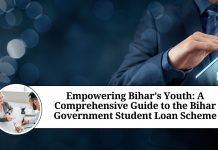Introduction
Tuberculosis (TB) remains one of the world’s most significant health challenges, affecting millions of people globally. Recognizing the urgent need to combat this disease, governments around the world have implemented various schemes and programs aimed at improving the lives of TB patients. In this blog post, we will explore some of the notable government schemes for TB patients and how they are making a difference in the fight against tuberculosis.
- National TB Control Programs
Many countries have established National TB Control Programs (NTPs) to coordinate efforts in diagnosing, treating, and preventing tuberculosis. These programs are often funded by governments and work in collaboration with international organizations such as the World Health Organization (WHO). NTPs focus on areas such as early detection, standardized treatment protocols, public awareness campaigns, and training healthcare workers to ensure effective management of TB cases.
- Directly Observed Treatment, Short-course (DOTS)
The DOTS strategy is a key component of many government schemes for TB patients. It involves providing standardized treatment under direct observation to ensure patient adherence and reduce the development of drug-resistant strains. DOTS programs have proven highly effective in achieving high cure rates and have become a cornerstone of TB control efforts worldwide.
- Free or Subsidized Diagnosis and Treatment
To ensure access to quality healthcare services, governments often provide free or subsidized diagnosis and treatment for TB patients. This initiative aims to eliminate financial barriers that could otherwise prevent individuals from seeking proper care. Governments may offer free diagnostic tests, medications, hospitalization, and follow-up care to ensure comprehensive treatment and management of the disease.
- Capacity Building and Training
Governments understand the importance of a well-trained healthcare workforce to effectively combat TB. Therefore, many government schemes prioritize capacity building and training programs for healthcare professionals. These programs focus on enhancing the skills of doctors, nurses, laboratory technicians, and other healthcare workers involved in the diagnosis, treatment, and prevention of tuberculosis. Training may include the latest diagnostic techniques, treatment protocols, infection control measures, and counseling skills to support patients throughout their treatment journey.
- Awareness and Prevention Campaigns
Government schemes also emphasize raising public awareness about tuberculosis and its prevention. This includes disseminating information through various channels, such as mass media, community outreach programs, and educational campaigns. By educating the public about the symptoms, transmission, and available resources for TB, governments aim to improve early detection rates, reduce stigma, and encourage individuals to seek prompt medical attention.
- Social Support and Rehabilitation
Living with tuberculosis can be emotionally and financially challenging for patients and their families. Recognizing these difficulties, government schemes often incorporate social support and rehabilitation programs. These initiatives may provide financial assistance, nutritional support, psychosocial counseling, and vocational training to help patients and their families cope with the impact of the disease and reintegrate into society after completing treatment.
Conclusion
Government schemes for TB patients play a crucial role in combating the global burden of tuberculosis. By implementing comprehensive programs that focus on early detection, standardized treatment, awareness, and support, governments aim to reduce the prevalence of TB, improve treatment outcomes, and ultimately save lives. These initiatives are a testament to the commitment of governments worldwide to address the challenges posed by tuberculosis and provide better care for those affected by this disease. Through collective efforts and continued investment in these schemes, we can strive towards a world where tuberculosis is no longer a global health threat.
Read more useful content:
Frequently Asked Questions (FAQs)
Q1: What is tuberculosis (TB)?
A1: Tuberculosis, commonly known as TB, is an infectious disease caused by bacteria called Mycobacterium tuberculosis. It primarily affects the lungs but can also affect other parts of the body, such as the kidneys, spine, and brain.
Q2: How is tuberculosis transmitted?
A2: TB is usually transmitted through the air when an infected individual coughs, sneezes, or talks, releasing tiny droplets containing the bacteria. Close and prolonged contact with an infected person is typically required for transmission to occur.
Q3: What are the symptoms of tuberculosis?
A3: Common symptoms of TB include persistent cough (often with phlegm or blood), fatigue, weight loss, fever, night sweats, and chest pain. Symptoms may vary depending on the type of TB and the organs affected.
Q4: How is tuberculosis diagnosed?
A4: Diagnosis of TB involves various methods, including a medical history evaluation, physical examination, tuberculin skin test (TST), chest X-rays, and sputum tests to detect the presence of TB bacteria. Molecular tests such as GeneXpert are also used to diagnose drug-resistant forms of TB.
Q5: Is tuberculosis treatable?
A5: Yes, tuberculosis is treatable with appropriate medications. Standard treatment typically involves a combination of antibiotics taken for several months. It is crucial for patients to complete the full course of treatment to ensure effective eradication of the bacteria.
Q6: Are there drug-resistant forms of tuberculosis?
A6: Yes, drug-resistant TB occurs when the bacteria become resistant to one or more of the medications commonly used to treat TB. This can result from inadequate treatment or improper use of medications. Drug-resistant TB requires specialized treatment and may take longer to cure.
Q7: Is tuberculosis a preventable disease?
A7: Yes, tuberculosis is preventable. Prevention measures include vaccination (BCG vaccine), early detection and treatment of active cases, infection control measures in healthcare settings, proper ventilation, and minimizing exposure to infected individuals.
Q8: Who is at risk of developing tuberculosis?
A8: Anyone can contract TB, but certain factors increase the risk. These include close and prolonged contact with an infected person, weakened immune system (such as with HIV/AIDS or certain medical conditions), malnutrition, living in crowded conditions, and insufficient access to healthcare.
Q9: Can tuberculosis be cured completely?
A9: With appropriate treatment and adherence to the prescribed medication regimen, TB can be cured completely. It is crucial for patients to complete the full course of treatment, even if they start feeling better, to prevent relapse or the development of drug resistance.
Q10: Are there government programs to support tuberculosis patients?
A10: Yes, many governments have implemented schemes and programs to support tuberculosis patients. These programs often include free or subsidized diagnosis and treatment, capacity building and training for healthcare workers, public awareness campaigns, and social support initiatives to assist patients and their families during the treatment process.




















